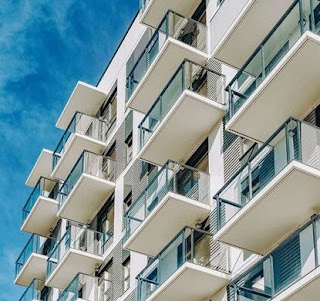Strata Management Solutions Australia
Your Strata Fund, 10-year maintenance plan and you.
The Australian Strata landscape is a little odd, filled with names and terms that can change from state to state and can be unwieldy to the uninitiated. Even for those who may have grown up in buildings with a strata plan, outside of perhaps the payment of strata levies, the level of knowledge (and interest!) in what happens inside the ‘strata machine’ may not always be clear. This article hopes to shine some light on the terms and financial components of strata at a high level.
The state determines the name.
Firstly is the naming conventions. Strata take on several names, which can change depending on the state it is based. Owners Corporation (Vic, ACT and NSW), Body Corporate (Tas, QLD, NT), Strata Corporations (SA), and finally Strata Companies (WA) all essentially mean the same thing.
Each is a collective entity that guides the scheme responsible for the building’s common areas (shared spaces) and can guide the behaviour of residents and use of the building through its own agreed bylaws.
A committee manages each entity, usually consisting of members of the building that can form new bylaws as the need arises and oversee the operation of the building. The day to day management is often outsourced to an external ‘strata manager’ who can monitor and pay bills, organise repairs and issue documentation to residents (and lot owners) in the scheme.
In conjunction with strata specialist lawyers, they can also offer advice on courses of action when disputes arise to ensure adherence to the relevant legislation.
Strata Funds explained
The money collected by the Strata committees is deposited into a fund for the future use and enjoyment of the collective to help maintain the property and, in turn, the value of their investment. Similarly, these pools of funds have different names across the continent.
In most parts, the pool is divided up into two use cases. There is an Administrative fund for shorter-term and recurrent expenditure, such as garden maintenance, annual insurance premiums and replacement of fixings and other small items. Whilst not mandatory in most states, it is usually advised to restrict the shorter-term spending from the longer-term savings. From here on, I will use the term ‘Strata Admin Fund’ to refer to these types of accounts.
For longer-term and typically larger expenditure that needs multiple years to be saved for, there is the Capital Works Fund (NSW & ACT), Sinking Fund (QLD, NT, TAS & SA), Maintenance Fund (VIC) and Reserve Fund (WA). From here on, I will use the term ‘Strata Investment Fund’ to refer to this type of fund.
These funds build up over time and are drawn down to meet the higher costs as they arise and can often be significant (several million dollars) if the building is substantial and well run. The size of these funds is critical, as the balances are available to potential buyers of the lots, can determine how well the strata scheme is run and influence the price willing to be paid for lots in the building.
If a Strata Investment Fund appears to be poorly funded, this can be a red flag to new owners that the management of the building is poor, and there is a high chance that future costs will need to be met by sudden special levies.
10-year maintenance plans explained
The idea of the 10-year maintenance plan is a simple one. Plan and prepare for the costs. Whilst anyone can produce such a plan, it is highly recommended that a professional (usually a quantity surveyor skilled at pricing repairs and replacements) is engaged to assess the areas in the common property. This work is done to ascertain if and how various components may fail or need to be replaced.
These estimates are then categorized and put in a timeline to help the owner’s committee determine how much needs to be saved in the Strata Investment Fund to allow for the work to be done. Examples of this work can be replacing carpet and tiles, repainting and refreshing surfaces, and replacing major plant and equipment like fire equipment, pool equipment, and air conditioning.
Below is an example of a very simple 10-year plan to help illustrate:
As you can see from the above, the cash requirements are low in some years, with the occasional significant expenditure. This, of course, is just an estimate, and like most things, may be subject to change as equipment fails earlier than expected and needs to be replaced.
In this event, several options are usually available. If there are ample reserves in the Strata Investment Fund, then fantastic. If there is not, the decision will need to be made to authorise a ‘Special Levy’ on the lot owners or finance the works using a loan. It can also result in a mixture of Special Levy and finance depending on the situation and money available from the lot owners. The ability for the Strata Investment Fund to be exhausted and debt then being required would be a big concern for future buyers of lots in the building.
Excepting the above, the process of planning for the expenditure was reasonably straightforward. Total amounts were calculated and then divided by the number of years and levy-paying lots to determine their quarterly or annual contribution amount. The plan can also incorporate figures for inflation and returns on aggregated savings to provide more realistic results.
Regrettably, this method, whilst still somewhat helpful, needs work in ensuring that the current cash return rate (which is less than inflation) is accounted for. With the widespread assumption that this situation will not change anytime soon, now is the time to do something about it.
You can check out our maintenance fund / sinking fund forecast tool to get an estimate of your scheme/plan’s needs and how better investment can help lower
annual levies by clicking below:
Searching for a solution for Strata Funds
So, by now, you have familiarised yourself with the naming quirks of the strata schemes and their respective types of funds, along with where the 10-year plan interfaces with the savings of the building. The big question now remains, how can this process be optimised to ensure that the buildings cost needs can be met, whilst trying to minimise the amount required from each lot owner through rising strata levies?
Much like your own personal superannuation, the Strata Investment Fund can be thought of as the superannuation of a building. Upon retirement, you draw down on your savings in sporadic amounts (think holidays, caravans and increasingly, helping the family financially) with the knowledge that the residual amount is invested appropriately, building upon itself and giving you confidence that it will hopefully not run out.
Unfortunately, this is where the similarities end for Strata Investment Funds, which are typically ‘invested’ in either cash or term deposits. Both are currently earning a below-inflation return, meaning the account’s value is falling against the costs ahead saved for.
It is this unfortunate situation that Strata Guardian aims to fix using proven and robust investment strategies that can assist in achieving better real returns over the long term for the Australian Strata Community.
We can do this in a number of ways, including getting a better rate for your term deposits, using our Strata Term service, or looking for better returns using our market-linked portfolios, Strata Guardian and Grow.
We welcome you to get in touch and see how we can incorporate your building’s 10-year plan into competent and transparent investment strategies that help fight rising strata levies, avoid ‘special levies’ and support the value of the lots within your building.




"I've been searching for the best body corporate manager in QLD for weeks now and I'm so glad I stumbled upon your blog. Your content was really insightful. Can you recommend any specific managers or companies that you trust?
ReplyDelete